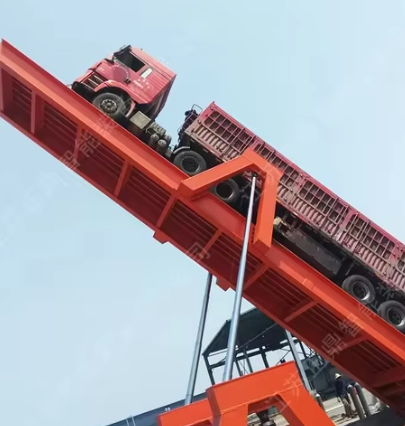Optimizing Dumper Truck Loading Efficiency
Proper Load Distribution and Weight Management
Getting the weight right when loading dump trucks makes all the difference for keeping them stable while they're working. Spread that cargo evenly across both axles and we avoid those dangerous tipovers plus save money on tire replacements down the road. Most trucks have weight limits built into their design specs, so sticking to those numbers prevents serious structural problems later on and cuts back on expensive repairs. Training crews properly matters too. Operators who understand how different materials affect balance tend to work safer and get more done without breaking equipment. Some companies find it worth investing time in hands-on workshops where workers actually practice loading techniques instead of just reading manuals.
Utilizing Payload Management Systems
Payload Management Systems (PMS) let operators keep track of how much weight their trucks are carrying in real time, which helps them stay within those pesky local weight restrictions. The best part? These systems collect all sorts of useful data points that fleet managers can analyze to tweak loading procedures and cut down on wasted time between jobs. Companies that implement PMS tech tend to see fewer instances of overloaded vehicles, plus they burn less fuel since properly loaded trucks don't guzzle gas like their overweight counterparts. For dump truck operations specifically, getting serious about payload management makes sense from both an economic standpoint and safety perspective. Many businesses report saving thousands annually just by avoiding fines and reducing wear on equipment through better weight distribution practices.
Enhancing Unloading Speed and Safety
Trough Design Innovations for Quick Material Release
When trying to get materials off trucks faster, new trough designs make all the difference. They cut down on friction where stuff rubs against the truck bed, so everything flows out much better. Faster unloading means more work gets done in a day, which saves money overall. Companies are working hard to develop special coatings and shapes that keep spills contained while still letting material come out quickly. Trucks fitted with these improved trough systems actually finish unloading around 30% quicker than standard models. For businesses where time equals money, this kind of improvement matters a lot. Putting resources into better trough tech isn't just smart business it makes dump trucks work harder and smarter across construction sites and mining operations everywhere.
Safe Unloading Practices on Varied Terrains
Standardized unloading methods work best when applied across different types of terrain, making jobs safer and more efficient overall. The process starts with checking how stable the ground actually is because this determines what kind of safety rules need to be followed during unloading operations. Real world examples show just how critical proper terrain assessment becomes. When workers analyze the land properly, they can adjust their approach to prevent materials from spilling out unexpectedly. Getting operators trained in these safety procedures according to OSHA guidelines makes sense if companies want fewer injuries at work sites. Terrain specific approaches help keep things running smoothly even when conditions change from day to day. Putting all these precautions together protects both people working around dump trucks and helps those vehicles perform better in the long run.
Preventive Maintenance for Sustained Efficiency
Regular Lubrication and Component Inspections
Keeping dumper trucks properly lubricated and checking their parts regularly makes all the difference when it comes to maintaining efficiency. Lubricants cut down on friction between moving parts which naturally slows wear and tear, so engines and transmissions last longer before needing major repairs. When technicians inspect things like hydraulic systems, bearings, and joints during scheduled checkups, they spot problems early on before small issues become big headaches. Studies show sticking to good maintenance routines boosts truck performance by around 20 percent, saving money in the long run. The smart money is always on preventive care rather than emergency fixes. Well maintained equipment simply works better day after day without surprising everyone with breakdowns at inconvenient moments.
Monitoring Systems for Early Problem Detection
Telematics monitoring systems are really important for catching problems early in dumper trucks. They give operators live information about how the vehicles are running, so mechanics can spot issues before they turn into big headaches. When companies bring in predictive maintenance tools too, they cut down on downtime because repairs happen when the trucks aren't needed most. Following what the manufacturers say matters a lot here, plus looking back at past maintenance records helps create better schedules. This approach keeps the fleet running smoother while saving money on unexpected breakdowns. Most fleet managers will tell you that staying ahead of maintenance needs means fewer trucks sitting idle and more work getting done on time.
Technology Integration to Boost Performance
Automated Weighing and Real-Time Load Tracking
Weighing systems installed on dump trucks greatly improve accuracy when managing loads, something that makes a big difference in how well operations run day to day. These systems provide instant readings while loading, helping planners map out better routes so trucks aren't overloaded or underutilized. When weights get distributed unevenly across the bed, the system actually notifies drivers right away, giving them time to rebalance before heading out. Industry reports show that businesses adopting such technology typically see around a 25% jump in overall efficiency. That translates into fewer delays at sites, less wear and tear on vehicles, and ultimately significant money saved over months of operation.
Safety Sensors and Camera-Assisted Operations
The addition of safety sensors to dumper trucks has become really critical when it comes to preventing accidents, particularly since they warn drivers about dangers lurking in those annoying blind spots around the vehicle. When paired with cameras that help see what's going on, these systems make all the difference during those tricky loading and unloading moments at construction sites or warehouses. Beyond just stopping collisions, this tech actually helps businesses stay within the bounds of various safety regulations that get updated every few years. Most professionals in the field have been pushing hard for these upgrades lately because they know firsthand how much safer operations become once implemented. Companies that invest in such equipment typically find themselves facing fewer incidents while still meeting all the regulatory requirements, which means their day-to-day running becomes far less stressful and interruptions drop considerably over time.
FAQ Section
What is the importance of proper load distribution in dumper trucks?
Proper load distribution helps maintain the balance and stability of dumper trucks, preventing tipping and uneven tire wear, which can lead to damage and safety risks.
How do payload management systems improve dumper truck efficiency?
Payload management systems provide real-time monitoring and data analytics that optimize loading processes and help prevent overloads, enhancing fuel efficiency and compliance with weight regulations.
What role do innovative trough designs play in unloading efficiency?
Innovative trough designs reduce friction between materials and the truck bed, allowing for quicker unloading processes and improved operational productivity.
Why are standardized unloading practices important across varied terrains?
Standardized unloading practices ensure safety and efficiency by taking into account terrain stability and employing tailored safety protocols, reducing risks of spills and accidents.
How does regular lubrication contribute to dumper truck maintenance?
Regular lubrication minimizes friction and wear on components, extending the vehicle's lifespan and ensuring reliable operation over time.
What are the benefits of using monitoring systems like telematics for dumper trucks?
Monitoring systems provide real-time performance insights, enabling early detection of issues and proactive maintenance strategies to reduce downtime.
Why are safety sensors important in dumper truck operations?
Safety sensors enhance visibility during loading and unloading, alerting operators to hazards and preventing accidents, while ensuring compliance with safety standards.
Table of Contents
- Optimizing Dumper Truck Loading Efficiency
- Enhancing Unloading Speed and Safety
- Preventive Maintenance for Sustained Efficiency
- Technology Integration to Boost Performance
-
FAQ Section
- What is the importance of proper load distribution in dumper trucks?
- How do payload management systems improve dumper truck efficiency?
- What role do innovative trough designs play in unloading efficiency?
- Why are standardized unloading practices important across varied terrains?
- How does regular lubrication contribute to dumper truck maintenance?
- What are the benefits of using monitoring systems like telematics for dumper trucks?
- Why are safety sensors important in dumper truck operations?

